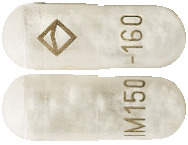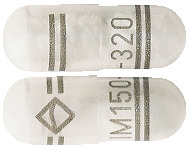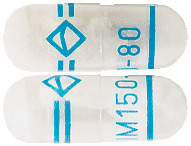SUMMARY CMI
ATECTURA® BREEZHALER®
Consumer Medicine Information (CMI) summary
The full CMI on the next page has more details. If you are worried about using this medicine, speak to your doctor or pharmacist.
▼ This medicine is new or being used differently. Please report side effects. See the full CMI for further details.
1. Why am I using ATECTURA BREEZHALER?
ATECTURA BREEZHALER contains the active ingredients indacaterol and mometasone furoate. ATECTURA BREEZHALER is used to treat the symptoms of asthma attack in patients over 12 years of age.
For more information, see Section 1. Why am I using ATECTURA BREEZHALER? in the full CMI.
2. What should I know before I use ATECTURA BREEZHALER?
Do not use if you have ever had an allergic reaction to indacaterol and mometasone furoate or any of the ingredients listed at the end of the CMI. ATECTURA BREEZHALER also contains lactose monohydrate.
Talk to your doctor if you have any other medical conditions, take any other medicines, or are pregnant or plan to become pregnant or are breastfeeding.
For more information, see Section 2. What should I know before I use ATECTURA BREEZHALER? in the full CMI.
3. What if I am taking other medicines?
Some medicines may interfere with ATECTURA BREEZHALER and affect how it works.
A list of these medicines is in Section 3. What if I am taking other medicines? in the full CMI.
4. How do I use ATECTURA BREEZHALER?
- Carefully read the "Instructions for use" leaflet that comes with the medicine as well as this leaflet.
- You must only use the capsules with the inhaler you receive when you fill your script.
More instructions can be found in Section 4. How do I use ATECTURA BREEZHALER? in the full CMI.
5. What should I know while using ATECTURA BREEZHALER?
| Things you should do |
|
| Things you should not do |
|
| Driving or using machines |
|
| Drinking alcohol |
|
| Looking after your medicine |
|
For more information, see Section 5. What should I know while using ATECTURA BREEZHALER? in the full CMI.
6. Are there any side effects?
Less serious side effects include itchiness, rash, sore throat, white tongue, harsh or croaky voice, pain in muscles, bones or joints, muscle spasm, headache, feeling or being sick. Serious side effects include trouble breathing, wheezing, swelling of face, tongue, eyes, difficulty swallowing, blisters on face, lips that are spreading; changes to vision, tightness in chest, chest pain or fast heart rate that may make you feel faint.
For more information, including what to do if you have any side effects, see Section 6. Are there any side effects? in the full CMI.
▼ This medicine is subject to additional monitoring. This will allow quick identification of new safety information. You can help by reporting any side effects you may get. You can report side effects to your doctor, or directly at www.tga.gov.au/reporting-problems.
FULL CMI
ATECTURA® BREEZHALER®
Active ingredient(s): Indacaterol (as acetate)/mometasone furoate
Consumer Medicine Information (CMI)
This leaflet provides important information about using ATECTURA BREEZHALER. You should also speak to your doctor or pharmacist if you would like further information or if you have any concerns or questions about using ATECTURA BREEZHALER.
Where to find information in this leaflet:
1. Why am I using ATECTURA BREEZHALER?
2. What should I know before I use ATECTURA BREEZHALER?
3. What if I am taking other medicines?
4. How do I use ATECTURA BREEZHALER?
5. What should I know while using ATECTURA BREEZHALER?
6. Are there any side effects?
7. Product details
1. Why am I using ATECTURA BREEZHALER?
ATECTURA BREEZHALER contains the active ingredients indacaterol and mometasone furoate.
Indacaterol belongs to a group of medicines called bronchodilators that help relax the muscles of the small airways in the lungs making it easier for air to get in and out.
Mometasone furoate belongs to a group of medicines called corticosteroids that reduce swelling and irritation in the small airways in the lungs and gradually ease breathing problems and prevent asthma attacks.
ATECTURA BREEZHALER is used to treat asthma in adults and adolescents 12 years of age and older where the combination of a long-acting beta-2 agonist (indacaterol) and inhaled corticosteroid (mometasone furoate) is appropriate. Asthma is a condition that narrows your airways making it difficult to breathe and can be brought on by a number of things including exercise, smoke, cold air or allergens such as pollen or dust.
2. What should I know before I use ATECTURA BREEZHALER?
Warnings
Do not use ATECTURA BREEZHALER if:
- you are allergic to indacaterol, mometasone furoate, or any of the ingredients listed at the end of this leaflet.
- you are allergic to lactose or milk protein
Always check the ingredients to make sure you can use this medicine.
Check with your doctor if you:
- have any other medical conditions
- take any medicines for any other condition
- have heart problems including an irregular or fast heartbeat
- have thyroid gland problems
- have diabetes or high blood sugar
- suffer from seizure or fits
- have low potassium
- have liver problems
- have tuberculosis of the lung or any longstanding or untreated infections
During treatment, you may be at risk of developing certain side effects. It is important you understand these risks and how to monitor for them. See additional information under Section 6. Are there any side effects?
Monitoring before and during treatment
Your doctor may send you for tests on your liver, heart, or lung function. They may also send you for blood tests from time to time to check on how your body is responding to treatment. It is important that you attend these appointments and get all your testing done. If you are diabetic, you may also need to monitor your blood sugar closely.
Effects of corticosteroids
Your doctor may wish to start you on the lowest available dose to see how your body responds to treatment first. Taking higher doses of therapy, particularly for a longer period of time may have unwanted effects on your body and is especially more dangerous in children under 12.
Using your ATECTURA BREEZHALER
You should ensure that you know how to use the device correctly so that you get the best benefit from the medicine. You may also get white residue on the back of your throat from the medicine.
Children (patients under 12)
There is not enough information about whether this medicine is safe or effective in children under the age of 12.
Pregnancy and breastfeeding
Check with your doctor if you are pregnant, think you may be pregnant, or intend to become pregnant. There is not enough information on the use of this medicine in pregnancy and so may harm your unborn baby.
Talk to your doctor if you are breastfeeding or intend to breastfeed. Indacaterol and/or mometasone furoate may pass into breastmilk and harm your unborn baby.
3. What if I am taking other medicines?
Tell your doctor or pharmacist if you are taking any other medicines, including any medicines, vitamins or supplements that you buy without a prescription from your pharmacy, supermarket or health food shop.
Some medicines may interfere with ATECTURA BREEZHALER and affect how it works.
- Medicines to treat depression
- Medicines like ATECTURA BREEZHALER; these may increase the risk of possible side effects
- Medicines that decrease the level of potassium in your blood
- Medicines to treat high blood pressure, other heart problems, or glaucoma
- Medicines to treat fungal infections
- Medicines to treat HIV infection
Check with your doctor or pharmacist if you are not sure about what medicines, vitamins or supplements you are taking and if these affect ATECTURA BREEZHALER.
4. How do I use ATECTURA BREEZHALER?
How much to use
- There are three dose strengths of ATECTURA BREEZHALER, 125/62.5 micrograms, 125/127.5 micrograms and 125/260 micrograms. Your doctor will decide which dose strength is appropriate for you.
- The usual dose is to inhale the contents of one capsule each day. You only need to use this medicine once a day because its effect lasts for 24 hours. Do not use more than your doctor tells you to use.
- You should inhale the contents of one capsule of ATECTURA BREEZHALER every day and continue to use it even when you are not experiencing asthma symptoms.
- Follow the instructions provided and use ATECTURA BREEZHALER until your doctor tells you to stop.
When to use ATECTURA BREEZHALER
- ATECTURA BREEZHALER should be used at the same time each day.
How to use the BREEZHALER
- Carefully read the full Instructions for use provided in the package leaflet before use
- Only use the capsules with the inhaler provided in the pack. You will receive a new inhaler each time you refill your script. The capsules should remain in the blister until you need to use them.
- Peel the backing away from the blister to open it, do not push the capsule through the foil
- Do not swallow the capsules
- Ensure you rinse your mouth out with water after each use.
Make sure you understand how to use the BREEZHALER device properly. If you are not sure, ask your doctor or pharmacist.
If you forget to use ATECTURA BREEZHALER
ATECTURA BREEZHALER should be used regularly at the same time each day. If you miss your dose at the usual time, inhale the dose as soon as possible. Then inhale the next dose at the usual time.
If it is almost time for your next dose, skip the dose you missed and take your next dose when you are meant to.
Do not take a double dose to make up for the dose you missed.
If you use too much ATECTURA BREEZHALER
If you think that you have used too much ATECTURA BREEZHALER, you may need urgent medical attention.
You should immediately:
- phone the Poisons Information Centre
(by calling 13 11 26), or - contact your doctor, or
- go to the Emergency Department at your nearest hospital
You should do this even if there are no signs of discomfort or poisoning. Signs that you might have taken too much include faster heart rate, shaking, being sick.
5. What should I know while using ATECTURA BREEZHALER?
Things you should do
- Only use the inhaler contained in the pack. You will receive a new inhaler each time you refill your script so you may discard your old inhaler when the capsules are all gone (see section "Getting rid of any unwanted medicine")
- Ensure you know how to use the inhaler properly otherwise the device may not work as well
- Keep all of your appointments and get all blood tests done so that your condition and your response to treatment can be monitored
- If you are diabetic or have high blood sugar, monitor your blood sugar closely while on treatment.
Always use this medicine exactly as your doctor or pharmacist has told you. Check with your doctor or pharmacist if you are not sure.
Call your doctor straight away if you
- Become pregnant or think you may be pregnant
- Experience tightness of the chest, coughing, wheezing or shortness of breath immediately after inhaling ATECTURA BREEZHALER
- Have difficulty breathing or swallowing, swelling of your tongue, lips or face, rash, itchy skin or hives as these could be signs of an allergic reaction
Remind any doctor, dentist or pharmacist you visit that you are using ATECTURA BREEZHALER.
Things you should not do
- Do not swallow the capsules
- Do not stop using this medicine suddenly
- Do not use ATECTURA BREEZHALER to treat any other complaints unless your doctor tells you to
- Do not give your medicine to anyone else (especially children), even if they have the same condition as you
Driving or using machines
Be careful before you drive or use any machines or tools until you know how ATECTURA BREEZHALER affects you.
Drinking alcohol
Tell your doctor if you drink alcohol.
Looking after your medicine
- Follow the instructions in the user leaflet on how to properly clean and take care of your ATECTURA BREEZHALER
- Keep your capsules in the original blister to protect them from moisture and light, and do not remove them until immediately before use
- Dispose of each BREEZHALER inhaler after 30 days of use
- Do not store above 25°C
Follow the instructions in the carton on how to take care of your medicine properly.
Store it in a cool dry place away from moisture, heat or sunlight; for example, do not store it:
- in the bathroom or near a sink, or
- in the car or on window sills
Keep it where young children cannot reach it.
Getting rid of any unwanted medicine
When you have no more capsules, you can discard your ATECTURA BREEZHALER inhaler as you receive a new one when you get your script refilled.
If you no longer need to use this medicine or it is out of date, take it to any pharmacy for safe disposal.
Do not use this medicine after the expiry date.
6. Are there any side effects?
All medicines can have side effects. If you do experience any side effects, most of them are minor and temporary. However, some side effects may need medical attention.
See the information below and, if you need to, ask your doctor or pharmacist if you have any further questions about side effects.
Less serious side effects
| Less serious side effects | What to do |
Skin problems
| Speak to your doctor if you have any of these less serious side effects and they worry you. If these side effects become severe, tell your doctor or pharmacist. |
Serious side effects
| Serious side effects | What to do |
Signs of an allergic reaction
| Call your doctor straight away, or go straight to the Emergency Department at your nearest hospital if you notice any of these serious side effects. |
Tell your doctor or pharmacist if you notice anything else that may be making you feel unwell.
Other side effects not listed here may occur in some people.
Reporting side effects
After you have received medical advice for any side effects you experience, you can report side effects to the Therapeutic Goods Administration online at www.tga.gov.au/reporting-problems. By reporting side effects, you can help provide more information on the safety of this medicine.
Always make sure you speak to your doctor or pharmacist before you decide to stop taking any of your medicines.
7. Product details
This medicine is only available with a doctor's prescription.
What ATECTURA BREEZHALER contains
| Active ingredients (main ingredients) | Indacaterol and mometasone furoate |
| Other ingredients (inactive ingredients) | Lactose monohydrate and gelatin |
| Potential allergens | Lactose monohydrate and gelatin |
Do not take this medicine if you are allergic to any of these ingredients.
What ATECTURA BREEZHALER looks like
ATECTURA BREEZHALER contains a white plastic BREEZHALER inhaler device together with capsules in blister cards. ATECTURA BREEZHALER has three strengths based on the amount of medicine in each:
ATECTURA BREEZHALER 125/62.5 microgram capsules have a natural transparent cap and uncoloured transparent body containing a white to practically white powder, with the product code "IM150-80" printed in blue above one blue bar on the body and with a logo printed in blue and surrounded by two blue bars on the cap (AUST R 319076)
ATECTURA BREEZHALER 125/127.5 microgram capsules have a natural transparent cap and uncoloured transparent body containing a white to practically white powder, with the product code "IM150-160" printed in grey on the body and with a logo printed in grey on the cap (AUST R 319075)
ATECTURA BREEZHALER 125/260 microgram capsules have a natural transparent cap and uncoloured transparent body containing a white to practically white powder, with the product code "IM150-320" printed in black above two black bars on the body and with a logo printed in black and surrounded by two black bars on the cap (AUST R 319074)
Who distributes ATECTURA BREEZHALER
ATECTURA BREEZHALER is supplied in Australia by:
Novartis Pharmaceuticals Australia Pty Limited
ABN 18 004 244 160
54 Waterloo Road
Macquarie Park NSW 2113
Telephone 1 800 671 203
Web site: www.novartis.com.au
This leaflet was prepared in June 2025.
(ate160720c_V3 based on PI ate160720i)
Published by MIMS August 2025





 MF 80 micrograms (low dose) in Atectura Breezhaler once daily is comparable to MF 200 micrograms once daily (low dose) using multi-dose dry powder inhaler.
MF 80 micrograms (low dose) in Atectura Breezhaler once daily is comparable to MF 200 micrograms once daily (low dose) using multi-dose dry powder inhaler.


